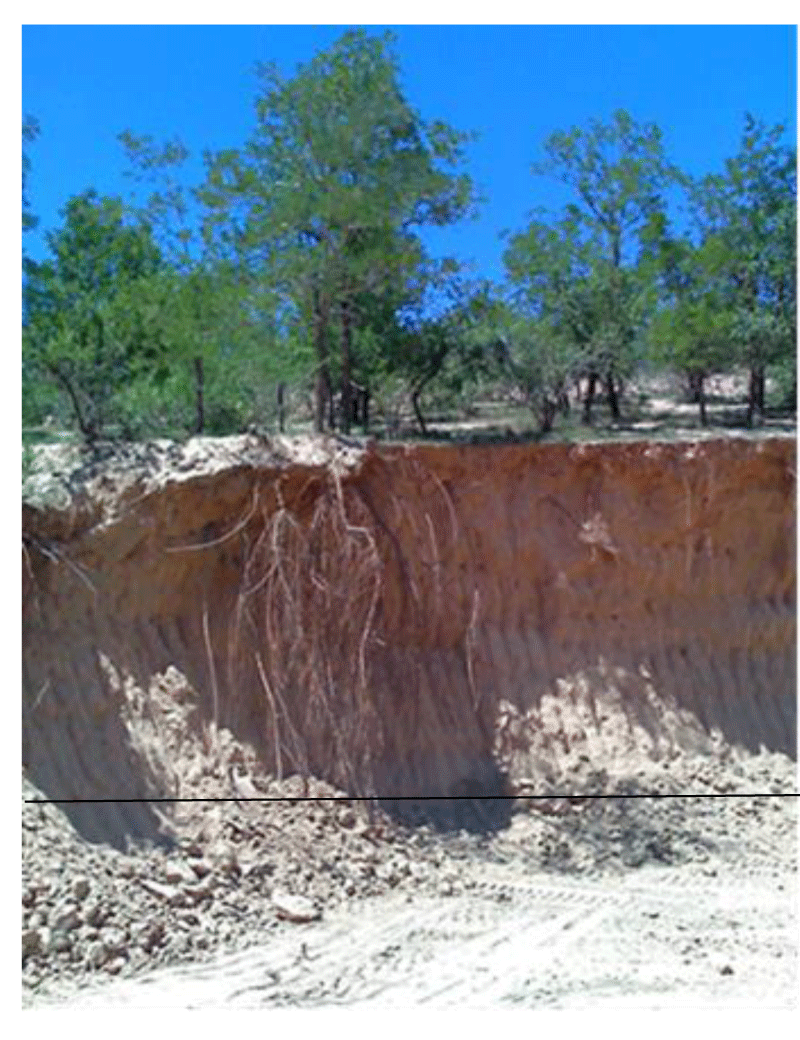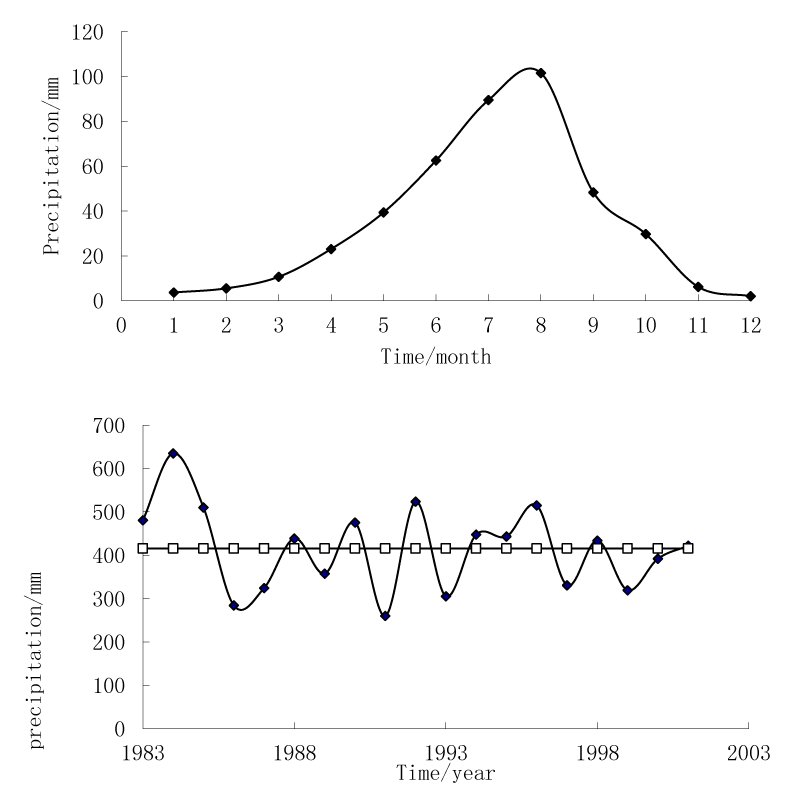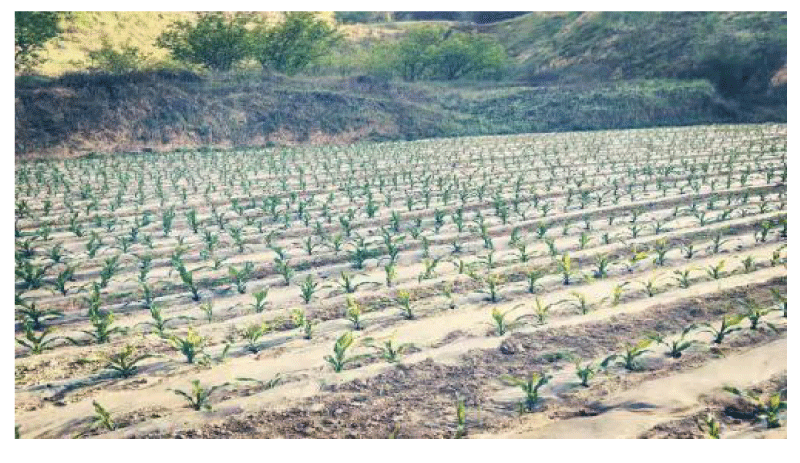Global Journal of Ecology
Forest restoration, resources sustainable use and high-quality sustainable management
Zhongsheng Guo1,2*
2The Institute of Water and Soil Conservation, the Chinese Academy of Sciences and the Department of Water Resources, China
Cite this as
Guo Z (2023) Forest restoration, resources sustainable use and high-quality sustainable management. Glob J Ecol 8(1): 007-010. DOI: 10.17352/gje.000075Copyright
© 2023 Guo Z. This is an open-access article distributed under the terms of the Creative Commons Attribution License, which permits unrestricted use, distribution, and reproduction in any medium, provided the original author and source are credited.As the economy develops and the population increases, there is an increasing demand for goods such as timber, food, medicine, and so on, and ecological services such as fresh water and the environment. Because goods and services produced by the original forest cannot meet the increasing need of people, so most of the original forest has become farmland, plantation, and grass. In the process of Forest restoration, a lot of exotic plants was introduced to produce special products and service. As exotic plants grow, vegetation declines, and crop failure will happen in dry years or resource waste in wet years. In order to solve these problems, Years of theoretical research and investigation in fixed positions have shown that there is a soil water resources use limit by plants and the soil water vegetation carrying capacity in the process of vegetation restoration. When the soil water resources in the range of the maximum infiltration depth are equal to the soil water resources use limit by plants, the plant water relation enters the key period of plant water relation regulation. If existing plant density is more than the soil water vegetation carrying capacity in the key period of plant water relation regulation, the plant water relation has to be regulated on the soil water vegetation carrying capacity to get maximal yield and service and realize high-quality sustainable management of forest vegetation in a water shortage area.
Introduction
With economic development and an increase in population, there is an increasing demand for the quantity and variety of plant production and service. But the plant production and service produced by the original forest ecosystem cannot meet the need of demand for the quantity and variety of timber, food, medicine, and so on, and ecological service, 80% of the original forest in the loess plateau [1] and the world has become farmland, man-made forest, and grass [2,3] and a lot of exotic plant species was introduced to produce more production and service. Because exotic plant changes the plant resources relation and the ability of self-regulation to adapt to climate change is very low, vegetation decline, crop failure, serious soil erosion, greenhouse gas emissions, and other ecological and environmental problems happen [4]. In order to solve the problem of soil degradation, vegetation decay or crop failure, or waste of resources and achieve high-quality sustainable development and meet the increasing need of people for plant goods and services. Years of research has shown that there is a limit to plant utilization of soil water resources and the soil water vegetation carrying capacity and the method of high quality and sustainable management of forest vegetation in water shortage area [2,3,5,6]. The main contents are as follows:
Methodology
The Study
Study site: The study was conducted at the Shanghuang Eco-experimental Station (latitude 35°59´-36°03´N, longitude 106°26´-106°30´E) in the semi-arid region of the Loess Plateau, in Guyuan County, in the Ningxia Hui Autonomous Region of western China. The area is in a hilly loess region with an elevation range of 1,534 m to 1,824 m with slope gradients of 10°to 25°. The main soil type is Huangmian soil 7] which is developed from loess parent material and is susceptible to soil and water losses, which are serious in this region. The rainfall is unevenly distributed in the year with a mean annual precipitation of 416 mm, and rainfall from June to September accounts for 64.7% of the total annual precipitation. The coefficient of variation of precipitation among the years from 1983 to 2001 was 23.8% and rainfall amounts ranged from 260 to 635 mm. The mean level of solar radiation is 5,342 MJ m2; the annual average temperature is 7.0°C. The plant growing period is 152 days.
The research object includes young caragana shrubland with different sowing plant densities (Caragana korshinskii Kom) and adult caragana shrubland with different preserving plant densities through thinning in the same loess slope of about 8 degrees, 3 m × 4 m young and adult Red plum apricot (Apricot) and fine pasture, Alfafa (Medicago sativa L.) grass and 1 m × 2 m high calcium tree species, Saskatoon berries (Amelanchier alnifolia Nutt.) in loess terrace land and so on. The measure item includes plant height with a tape measure, basical diameter growth with calipers, canopy, and root in the growing season from April to October. The survey method involves measuring the height, length, and width of the canopy with a tape measure and then estimating the coverage, with a caliper measure, and then estimating the biomass with a standard rain or 20 cm high mini gauges to measure precipitation inside and outside of canopy and then estimating soil water resources, with a neutron probe (CNC503A(DR) (Beijing Nuclear Instrument Company, Beijing) measures soil water content at different soil depth so on [1-3,6] and then estimating the soil water resources, maximum infiltration depth, utilization limit of soil water resources, the critical period of plant water relationship regulation and Soil water vegetation carrying capacity.
Results
The theory of utilization limit of resources by plants
The utilization limit of resources by plants includes spatial utilization limit of resources by plants, soil water resources utilization limit by plants in water-limited regions, and soil nutrient resources utilization limit by plants in soil nutrient-limited regions. For example, as time goes on and plant growth, plant height, diameter, forest canopy volume, and root volume increase, and roots develop deep, soil water and nutrient resources in the root zone reduced but available soil water resources are declined soil water resources in the root zone reduced but available soil water and nutrient resources are declined. In order to obtain maximum yield and beneficial results and achieve high quality and sustainable development, even if the root distribution depth is more than the maximum infiltration depth, Figure 1, plant roots do not absorb water indefinitely due to lack of water such as in semiarid loess hilly region (Guyuan. China) the precipitation changes with year and month, Figure 2 [1-3,8]. There should be a control limit for the utilization of soil water resources by plants in water-scarce areas, that is, the soil water resources use limit by plants [9,10] It is the soil water storage when the soil water content is equal to the wilting coefficient in the range of the maximum infiltration depth. The wilting coefficient at different soil depths in the maximum infiltration depth can be determined by a centrifugal machine or press film. The undisturbed soil at different soil depths in a soil profile was taken by a cutting ring with a 5 cm high and 5 cm diameter. The maximum infiltration depth can be estimated by the two curves method [6,11]. The wilting coefficient is expressed by the wilting coefficient of indicating plants in a plant community. The indicator plants of natural vegetation are the constructive species, and the artificial vegetation is the target species. When the soil water resources decrease to the utilization limit of soil water resources, the plant-water relationship enters the starting time of the critical period of plant-water relationship regulation [12,13]. At this time, the regulation of plant-water relationship should be considered to be regulated. The initial planting density influences the soil water resource use limit by plants [14].
Theory of vegetation carrying capacity
The ability of land resources to support vegetation is limited. The limit is vegetation carrying capacity. The term vegetation carrying capacity includes spatial vegetation carrying capacity in soil water and soil nutrient-rich regions, soil water vegetation carrying capacity, and soil nutrient vegetation carrying capacity [8]. The ability of soil water resources to support vegetation is called soil water carrying capacity for vegetation. The concept of soil water-carrying capacity for vegetation was first raised by Guo in 2000 [15]. It is the best term for express forest restoration. It refers to the maximum quantity per unit area of soil water resources that can maintain healthy growth of indicator plants at a given period and site condition [2,3,11,16] and can be estimated by soil water-lant density model [11,16], expressed by the number (absolute index) or density (relative index) of indicator plant population in the plant community. Soil water vegetation carrying capacity (SWVCC), changing with plant species (vegetation type), time or position, time climate change, especially the critical period of plant water relationship regulation, which is the theoretical basis for determining indicators and criteria for forest resources use degree and high quality and sustainable management of forest vegetation [11,16].
Critical period of plant-resources relationship regulation
Generally, along with plant growth, the amount of the available resources to a given canopy (cube) such as leaf amount in a given canopy or soil water resources in the maximum infiltration depth will also decrease, even though the soil water resources will increase after the rain. The plant-water relationship enters the critical period of plant-water relationship regulation. If the present plant density is more than soil water vegetation carrying capacity in the critical period of plant water relationship regulation, plant water relationship regulation has to be regulated. The plant-water relationship can be regulated Plant-water relationship can be regulated by different methods such as cultivating and selecting better plant species and varieties [5], soil preparation such as thin film cover and ridge tillage in the semiarid loess hilly region (Guyuan. China), see photo 3 and pruning some leave and trig and so on, but the most important method is to regulate the plant-water relationship by reducing plant density in the critical period of plant-water relationship regulation Figure 3.
Plant resources relationship in the growing season can be divided into different stages according to the resources use limit by plants such as soil water resources use limit by plants in the water-limited regions. If the available resources are more resources use limit by plants or soil water resources in the range of the maximum infiltration depth is more than soil water resources use limited by plants, showing resources such as soil water resources enough and plants grow healthily. If not, more attention should be paid to the plant-water relationship regulation.
The critical period of plant-resources relationship regulation refers to the time that the resources can maintain the plant growth healthy when the resources descend to the utilization limit of resources by plants such as soil water resources within the range of the maximum infiltration depth, it not only affects plant growth condition but also determines the maximum yield and benefit in the water-limited regions. The critical period of plant-water relationship regulation is the period from the starting time soil water resources are reduced to the limit of soil water resources utilization by plants to the ending time plant water relationship regulation is a failure. The ending time of the critical period of plant-water relationship regulation can be estimated by the thinning plant method. Sowing seeds in a plot with a maximum plant density and ensuring the maximum experimental plant density equals to or more than soil water carrying capacity for vegetation.
High-Quality and sustainable management of forest
Firstly, the better plant species and varieties have to be selected according to site conditions and cultivation goals [5] and then suitable initial planting density has to be taken. The initial planting density is more than the soil water carrying capacity for vegetation such as the soil water carrying capacity for vegetation in water-limited regions. If the existing plant density is more than the soil water carrying capacity for vegetation in the critical period of plant-water relationship regulation, showing plant overuse of soil water and plant density exceeds soil water carrying capacity, which will cause soil degradation, vegetation decline, fruit, and crop failure if the plant-water relationship should not be regulated. In this movement, we should regulate the plant-water relationship by reducing the plant density. The reduced amount of plant density is equal to the difference between the existing plant density and soil water-carrying capacity for vegetation. When the soil water resources decrease to the utilization limit of soil water resources by plants in the range of maximum infiltration depth, the plant-water relationship enters the critical period of plant-water relationship regulation. if the existing plant density is more than soil water carrying capacity for vegetation in the critical period of plant-water relationship regulation, plant-water relationship should be regulated by estimating the soil water carrying capacity for vegetation in the critical period of plant-water relationship regulation, and the maximum yield and benefit of non-commercial forest and grass can be obtained by determining and controlling the plant-water relationship according to the soil water carrying capacity for vegetation in the critical period of plant-water relationship regulation. The high quality and sustainable development can be achieved in water-limited regions.
Conclusion
Forest restoration efforts have increased in decades [17-23]. The most important work of forest restoration is the plant-resources relationship regulation in the process of vegetation, especially plant-resources relationship regulation in the critical period of plant- resources relationship regulation such as plant-water relationship regulation in the water-limited regions because it decides the maximum yield and benefit of a population or plant community. The foundations of plant-resources relationship regulation is resources use limit by plants and vegetation carrying capacity. When resources amount reduced to utilization limit of resources by plants, such as the soil water resources within the range of the maximum infiltration depth descend to the utilization limit of soil water resources, plant- resources relationship enters the critical period of plant- resources relationship regulation in which the resources severe influence the plant growth and decides the maximum yield and ecological, economic and social benefits. At this time, the plant- resources relationship should be regulated to obtain the maximum yield and benefit of non-commercial forest and grass and carry out high quality and sustainable development.
This research was supported by the National Science Fund of China (Project Nos 42077079, 41071193 and 41271539) and Study on high quality sustainable developm ent of soil and moisture conservation (A2180021002).
- Guo Z, Shao M. Impact of afforestation density on soil and water conservation of the semiarid Loess Plateau. J Soil Water Conserv. 2013; 68: 401-410. https://dio:10.2489/jswc.68.5.401.
- Guo Z. Soil water carrying capacity for vegetation. Land degradation development. 2021; 32(14):3801-3811. https:// DOI: 10.1002/LDR.3950
- Guo Z. Soil hydrology process and Sustainable Use of Soil Water Resources in Desert Regions. Water, 2021. 13(17):2377. http://doi.org/10.3390/w13172377
- Chen H, Shao M, Li Y. Soil desiccation in the Loess Plateau of China. Geoderma. 2008; 143:91-100. //doi.org/ 10.1016/ j. Geoderma. 2007.10.013
- Guo ZS, Wu QX, Si LM. A Study on selecting trees and grasses species of woodland for Fuel, Fodder and manure using fuzzy mathematics method in the loess hilly area. Journal of Biomathmatics. 1990; 5(3):69-76.
- Guo Z. Estimating Method of Maximum Infltration Depth and Soil Water Supply. Scientific Reports. 2020; 10(1):9726. https://doi.org/10.1038/s41598-020-66859-0
- FAO/UNESCO (1988) Soil map of the world, revised legend. FAO/UNESCO, Rome.
- Guo Z. Rice carrying capacity and sustainable produce of rice in resources-limited regions. Int J Agric Sci Food Technol. 2019; 5(1): 054-057.
- Guo Z, Shao M. Effect of Artificial Caragana korshinskii Forest on Soil Water in the Semiarid Area of Loess Hilly Region. Chin Forest Sci. 2010; 46:1-8.
- Guo ZS. [Soil water resource use limit in semi-arid loess hilly area]. Ying Yong Sheng Tai Xue Bao. 2010 Dec;21(12):3029-35. Chinese. PMID: 21442986.
- Guo Z. Theory and Practice on soil water carrying capacity for vegetation. 2014; 45-100. (Chin. Scientific Press).
- Guo Z. Limit of vegetation rehabilitation for soil and water conservation in semi-arid region of Loess Plateau. Chin J Science. Soil Water Conserv. 2014; 7: 49-54.
- Guo Z, Li Y. Initiation stage to regulate the caragana growth and soil water in the semiarid area of Loess Hilly Region, China. Chin J Ecol. 2009; 29: 5721-5723. http://www.oalib.com/paper/1402580#.XhRXA_ZuKUk.
- Guo Z, Zhang W. Impact of Initial Planting Density on Soil Water Resource uses Limit by Plants. Geoinfor Geostat: An Overview. 2016; 4:1.
- Guo Z,Shao M, Zhang Y, Wu Q. An Layer-dividing Approach to the soil water in forest land, the Proceedings of Soil Physics and Ecological Environmental Construction edited by Shao Mingan.74-79, Xiaan, Shanxi Science and technology press. 2002.
- Guo Z, Shao M. Vegetation carrying capacity of soil water and soil desiccation in artificial forestry and grassland in the semiarid regions of Loess Plateau. Chin J Ecol. 2003; 23: 1640-1647.
- Julia J. Forest restoration and hydrology. Forest Ecology and Management. 2022; 520: 120342. https://doi.org/10.1016/j.foreco.2022.120342
- Budagovski AI. Soil water resources and available water supply of the vegetation cover, Water Resources. 1986; 12(4):317-325.
- Cohen JE. Population growth and earth's human carrying capacity. Science. 1995 Jul 21;269(5222):341-6. doi: 10.1126/science.7618100. PMID: 7618100.
- Guo Z, Shao M. Mathematical model for determining vegetation carrying capacity of soil water. J Hydr. 2004; 35(10): 95–99.
- Lvovich MI. Soil trend in hydrology. Hydrological Sciences Bulleting. 1980; 25:33-45.https://dx.doi.org/10.1080/02626668009491902
- Price D. Carrying capacity reconsidered. Popul Enviro. 1999; 21:5-26.
- Young CC. Defining the range:The development of carrying capacity in management. J Hist Biol. 1998; 31: 61-83.
Article Alerts
Subscribe to our articles alerts and stay tuned.
 This work is licensed under a Creative Commons Attribution 4.0 International License.
This work is licensed under a Creative Commons Attribution 4.0 International License.





 Save to Mendeley
Save to Mendeley
